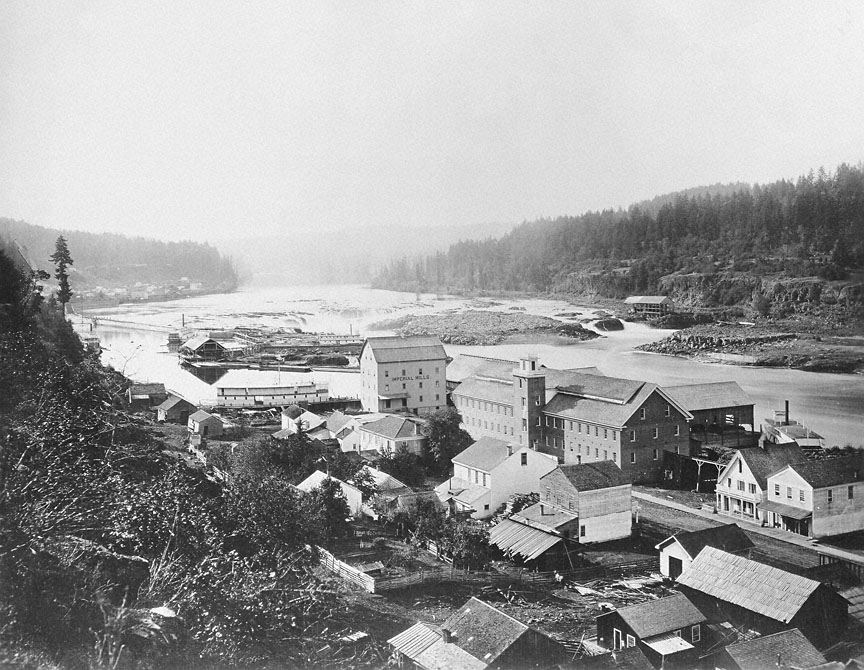- Catalog No. —
- OrHi 2591
- Date —
- 1867
- Era —
- None
- Themes —
- Geography and Places, Transportation and Communication
- Credits —
- Oregon Historical Society
- Regions —
- Willamette Basin
- Author —
- C. E. Watkins, photographer
Oregon City and Willamette Falls
This 1867 photograph, taken by Carleton Eugene Watkins, shows Oregon City and the Willamette Falls soon after the first portage railroad was built there. Oregon City had been incorporated in 1844 and was the first official city established west of the Rocky Mountains. The earliest non-Native settlers near Willamette Falls were retired French Canadian trappers and their Indian wives.
In 1846, John McLoughlin retired as the head of the Hudson’s Bay Company’s Columbia department and settled with his wife, Marguerite, and their family in Oregon City. He built a commercial gristmill that was powered by the falls. American settlers were also attracted to Oregon City, which served as capitol of Oregon Territory from 1849 to 1852. It was the territory’s largest settlement until the 1850s, when Portland’s advantageous site at the confluence of the Willamette and Columbia rivers helped establish it as a regional trade center.
At Oregon City, early steamboat companies portaged people and goods around the 40-foot-high Willamette Falls on a primitive road and wooden rail system. The portage railroad was built in the 1860s. Steamboats were able to travel past Oregon City without portaging after the Willamette Falls locks were completed in 1873. They were the first locks built in Oregon and are still operating today under the direction of the U.S. Army Corps of Engineers.
Further Reading:
Schwantes, Carlos. A Long Day’s Journey: The Steamboat & Stagecoach Era in the Northwest. Seattle, Wash., 1999.
Corning, Howard McKinley. Willamette Landings. Portland, Oreg., 1973.
Written by Kathy Tucker,© Oregon Historical Society, 2002.
